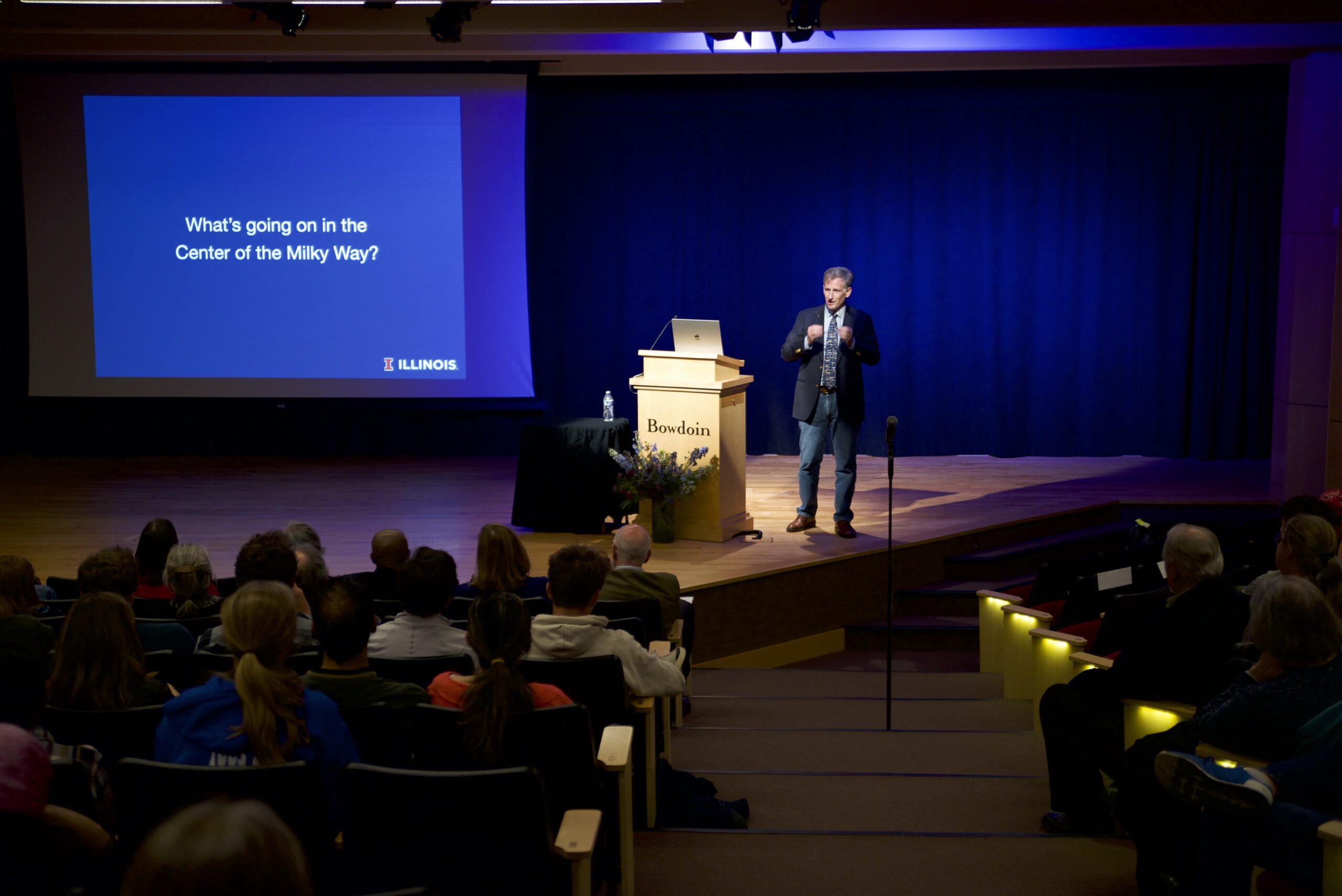Gammie examines the math behind imaging of black holes
November 11, 2022

Gammie specializes in imaging of black holes and the formation of Earth’s moon. He shared the process of the black hole image’s creation and its implications for the scientific community.
“Surrounding [the darkness of the black hole] is hot gas radiating, which is what we observe. We’re not seeing the hole itself, we’re just seeing a hole in the image produced by the black hole,” Gammie said. “We think that every galaxy in the universe has a black hole like this at the center.”
Though the image itself is visually impressive, Gammie focused the audience’s attention onto the true marvel of its creation—the telescope mathematics which allowed it to be seen at all.
“The real science is not in the image itself,” Gammie said. “The real science is in the measurements that were made at the telescopes. So that’s what we base all our interpretation of this data on. The image is something that people expect. But it’s very difficult to do science with this image, because it’s not unique.”
Gammie explained that the reason a telescope was able to pick up the black hole’s image can be traced back to the black hole’ssize. He elaborated that size and distance are inversely proportional, meaning that the image provides a lot of valuable information about the black hole’s location and scope.
“Almost all black holes look like point sources of light in the sky. If we can calculate what the mass of the black hole is, we can calculate how big the black hole is. The size of the [stars and black holes] in the sky is proportional to the mass of the black hole…. So if it’s far away, it’s small and we can’t see it. So this [black hole] is really [massive], and it’s also relatively far away.”
One attendee, Carlos Ruiz ’26, found Gammie’s communication of the scientific potential of telescoping inspiring.
“I thought it was really fascinating what they currently have imaging wise and how much data they can get from [it,]” Ruiz said. “We think of all the advances that society has made in space, but imaging is still such a hard thing to do. I think that the untapped potential there is very fascinating.”
Emma Butterfield contributed to this report.

Comments
Before submitting a comment, please review our comment policy. Some key points from the policy: